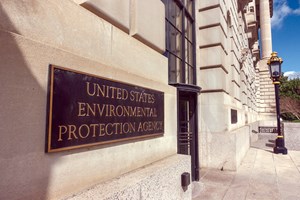EPA releases 7th Drinking Water Infrastructure Needs Survey and Assessment
(UI) — The Environmental Protection Agency (EPA) released the 7th Drinking Water Infrastructure Needs Survey and Assessment (DWINSA) on April 4.
The Safe Drinking Water Act (SDWA) requires that EPA conduct a survey and assessment every four years to examine the needs for infrastructure improvements and maintenance at public water systems.
The data for the 7th DWINSA, which was collected by EPA, states, and water systems in 2021, represents infrastructure projects that are necessary over the next 20 years for water systems to continue to provide safe drinking water to the public. These projects include infrastructure needs that are eligible for, but not necessarily financed by, the Drinking Water State Revolving Funds (DWSRF), including the installation of new drinking water infrastructure and the rehabilitation, expansion, or replacement of existing infrastructure.
The 7th DWINSA estimates that $625 billion will be needed for infrastructure improvements over the next 20 years. This is a 32% increase over the 6th DWINSA ($472.6 billion).
By law, each state is guaranteed a minimum allotment of 1% of the total amount of available funding. Starting in FY23, this allotment formula will be used to distribute the DWSRF Base Appropriations, the Bipartisan Infrastructure Law (BIL) General Supplemental, and the BIL Emerging Contaminants funds.
EPA used information collected in the 7th DWINSA on service line materials to develop a separate allocation formula to distribute the DWSRF BIL Lead Service Line Replacement fund. EPA developed the allotment formula based on the number of projected LSLs in each state.
To read the survey, click here.
Related News
From Archive

- Glenfarne Alaska LNG targets late-2026 construction start for 807-mile pipeline project
- U.S. water reuse boom to fuel $47 billion in infrastructure spending through 2035
- $2.3 billion approved to construct 236-mile Texas-to-Gulf gas pipeline
- Major water pipe break in Puerto Rico hits over 165,000 customers
- Potomac River Tunnel project enters construction phase beneath Washington, D.C.
- Pennsylvania American Water launches interactive map to identify, replace lead water service lines
- Trump's tariffs drive $33 million cost increase for Cincinnati sewer project
- Utah city launches historic $70 million tunnel project using box jacking under active rail line
- Tulsa residents warned after sewer lines damaged by boring work
- Fatal trench collapse halts sewer construction in Massachusetts; two workers hospitalized




Comments